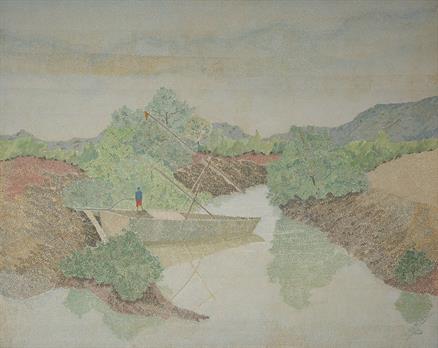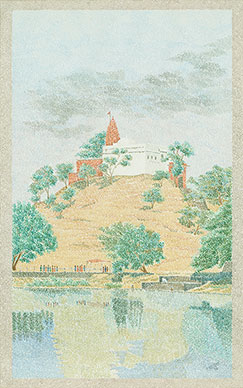Welcome to Content Services
Professional content writing services, unique research papers, and more.
Contact UsAn Analytical Exploration of the Artworks of Padmanabh Bendre
By Arun Kumar Ghosh
Introduction
Padmanabh Bendre, a prominent figure and a multi-faceted personality having experienced in Architecture, Art and Painting in the Contemporary Indian Art scene, who has started his early-age career as an Architect and later on shifted to painting which has garnered acclaim for his unique style and profound thematic explorations. His works are characterized by a blend of traditional Indian motifs and modernist sensibilities, creating a distinct visual language that speaks to a wide array of audiences. This article delves into the thematic and stylistic elements of Bendre's artworks, examining how his personal experiences and cultural heritage influence his creations.
Stylistic Elements
Use of Colour
One of the most striking features of Bendre's work is his vibrant use of colour. His palette often includes bold and contrasting hues that evoke emotional responses and draw viewers into his compositions. Bendre's use of colour is not merely decorative; it serves as a tool to convey mood, atmosphere, and symbolic meaning. For instance, his frequent use of deep blues and rich reds can be seen as a reflection of traditional Indian aesthetics, while also lending a modernist flair to his paintings.
Textural Complexity
Bendre's technique often involves the layering of textures, creating a tactile quality that invites viewers to explore the surface of his works. This textural complexity adds depth and dimension, making his paintings not just visual experiences but also sensory ones. His use of mixed media and unconventional materials further enhances this aspect, as seen in several of his pieces where he combines paint with fabric, paper, and other materials.
Thematic Exploration
Cultural Identity
A recurring theme in Bendre's work is the exploration of cultural identity. He frequently draws inspiration from Indian mythology, folklore, and classical art forms, re-interpreting these elements in a contemporary context. This fusion of the old and new not only pays homage to his cultural roots but also questions and re-defines them, reflecting the dynamic nature of identity in a globalized world.
Human Experience
Bendre's art often delves into the human experience, capturing emotions, relationships, and the complexities of existence. His figurative works, in particular, are poignant portrayals of individuals and their interactions. The expressive quality of his figures, combined with the symbolic use of colour and texture, creates a powerful narrative that resonates with viewers on a personal level.
Influences and Inspirations
Bendre's artistic journey is shaped by a diverse range of influences. His early exposure to traditional Indian art forms, such as Madhubani and Pattachitra, instilled in him an appreciation for intricate patterns and vibrant colours. Additionally, his formal education in fine arts exposed him to Western Modernist Movements, which influenced his approach to composition and abstraction. His travels and interactions with artists from different cultural backgrounds have also played a significant role in shaping his work. These experiences have broadened his perspective, allowing him to incorporate a variety of artistic traditions and techniques into his practice.
Conclusion
Padmanabh Bendre's artworks are a testament to the rich interplay between tradition and modernity. His masterful use of colour, texture, and symbolism creates a compelling visual language that speaks to the universal themes of identity and human experience. By examining his work, we gain insight into the ways in which contemporary Indian artists navigate and contribute to the global art landscape. Bendre's art not only reflects his personal journey but also invites viewers to embark on their own explorations of cultural and emotional landscapes.









0 Comments